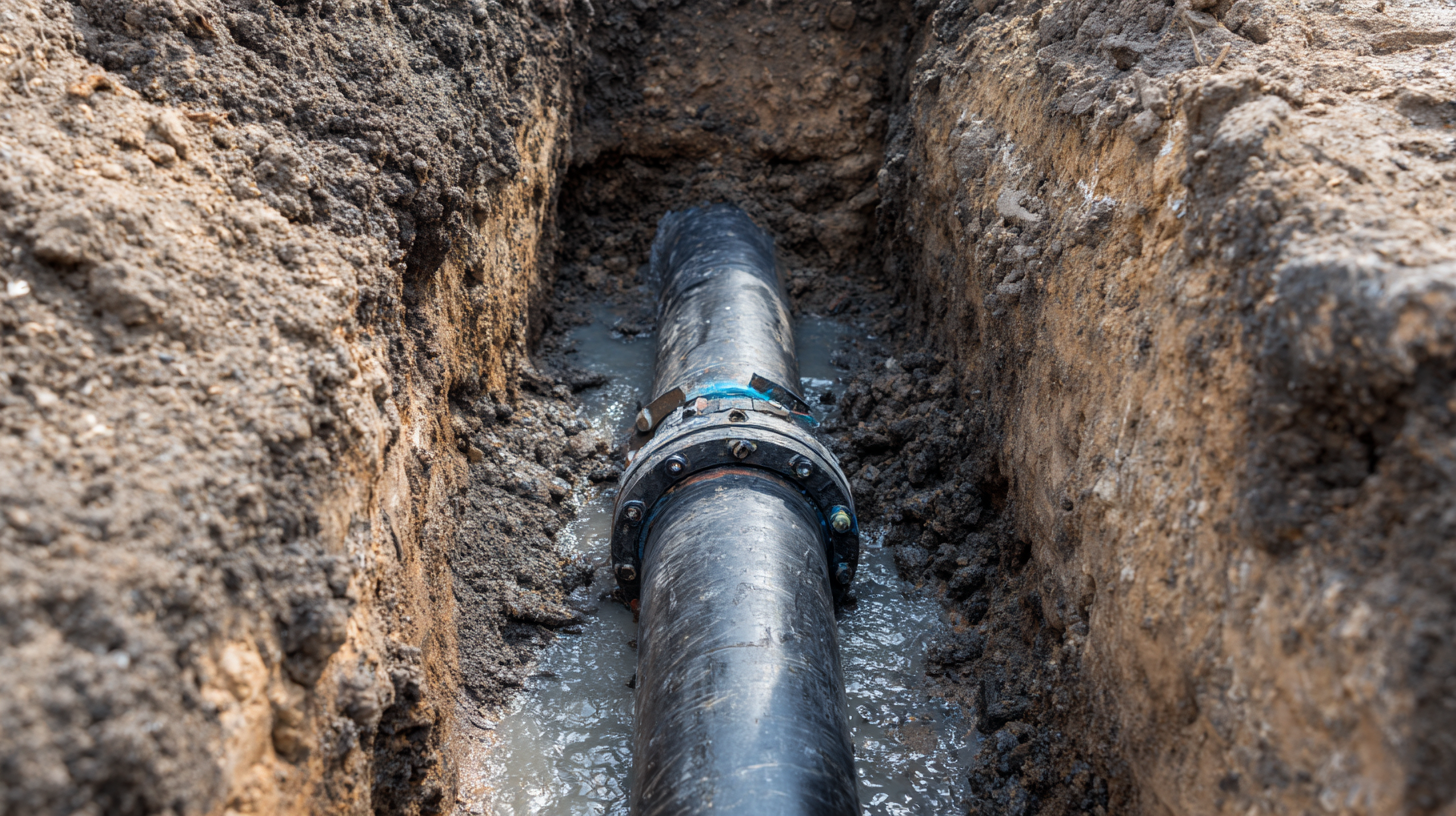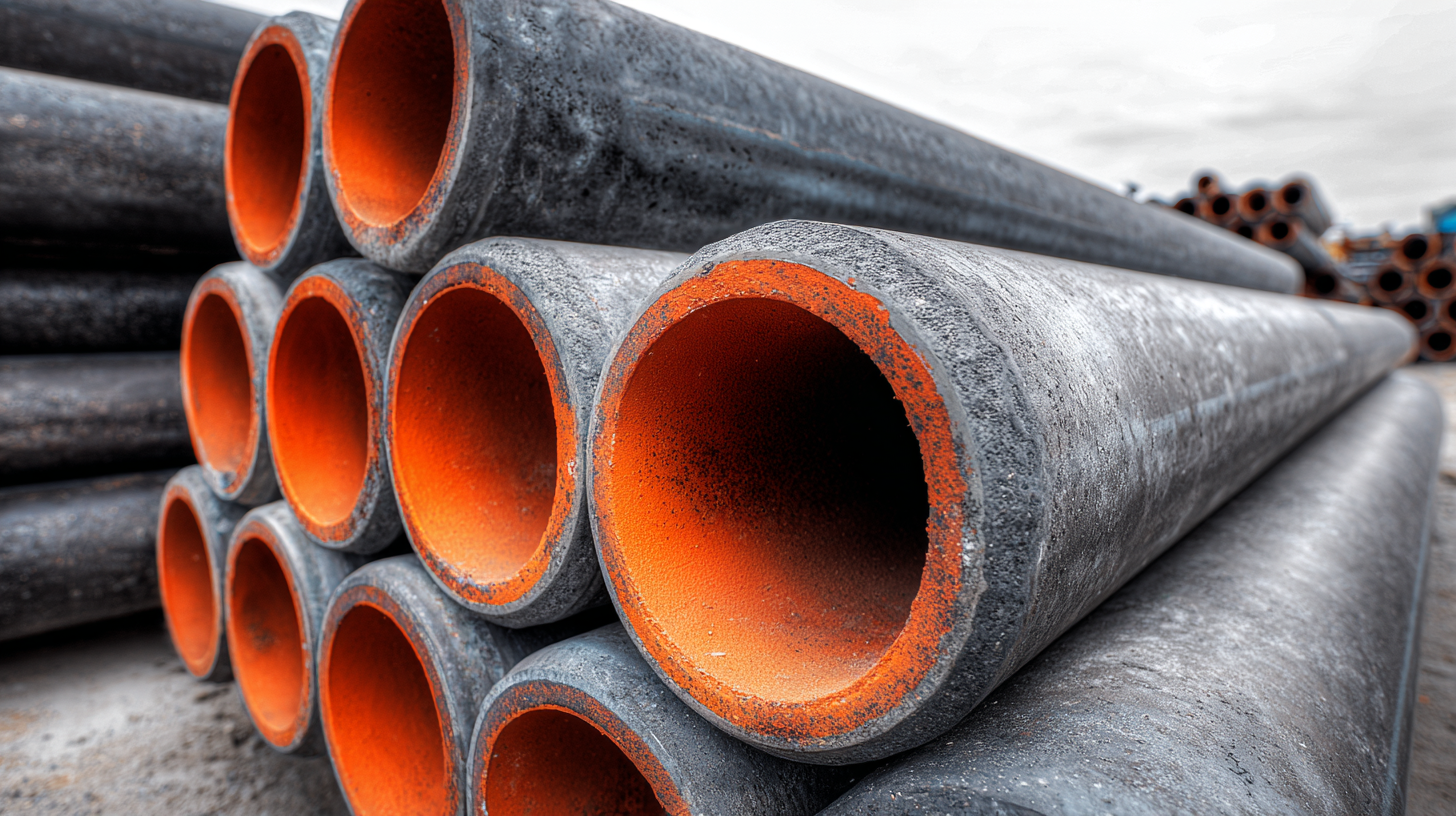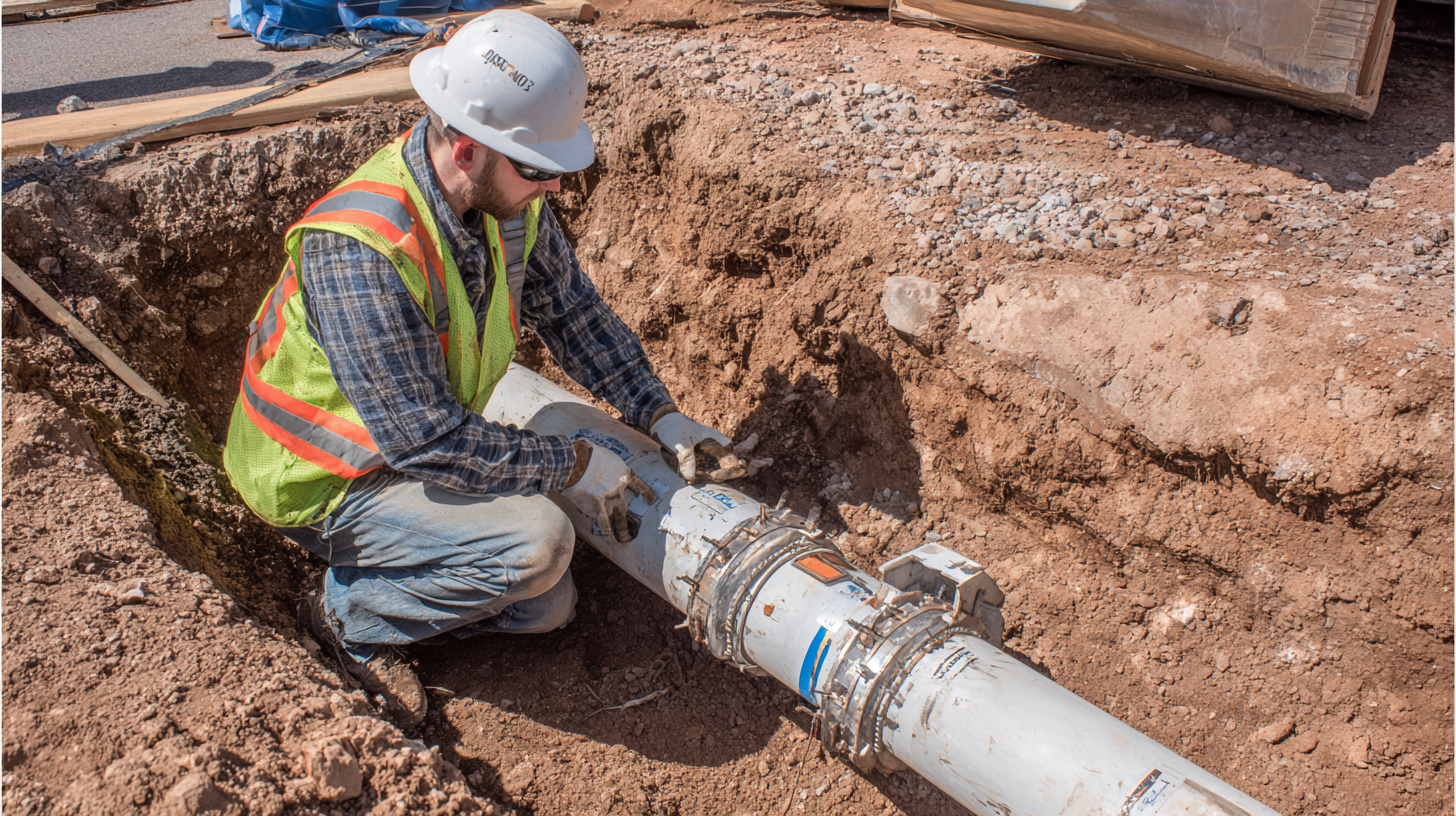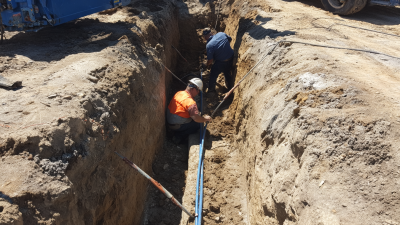Understanding Sleeve Sewer Lines: Benefits, Installation Tips, and Maintenance Guide
The installation and maintenance of sleeve sewer lines have become increasingly essential in modern plumbing practices, especially considering the growing concerns over infrastructure efficiency and environmental sustainability. According to the American Society of Civil Engineers (ASCE), an estimated 240,000 water main breaks occur each year in the United States, highlighting the urgent need for more resilient drainage systems. Sleeve sewer lines, designed to protect existing pipe structures while providing a seamless conduit for wastewater, offer a robust solution to mitigate such issues.

In recent years, numerous studies have demonstrated the effectiveness of sleeve sewer lines in prolonging the lifespan of underground plumbing systems. A report by the National Association of Sewer Service Companies (NASSCO) indicates that using trenchless technologies, including sleeve installations, can reduce pipeline repair costs by 30-50%. This method not only minimizes disruption to the surrounding area but also ensures that older infrastructure is reinforced rather than completely replaced.
As municipalities and property owners seek cost-effective and reliable solutions for sewer line maintenance, understanding the benefits, installation tips, and proper maintenance of sleeve sewer lines becomes imperative. In this guide, we will explore the top five advantages of utilizing sleeve sewer lines and offer practical advice for ensuring optimal performance and longevity.
Benefits of Sleeve Sewer Lines: Enhancing Longevity and Performance
Sleeve sewer lines offer several advantages that enhance both longevity and performance compared to traditional sewer systems. One of the most significant benefits is their resistance to corrosion and root intrusion. The protective sleeve acts as a barrier against the harsh chemicals often found in wastewater, thereby extending the life of the sewer lines. Additionally, the smooth interior surface of sleeve lines minimizes friction, promoting better flow and reducing the chances of blockages.
Another key aspect of sleeve sewer lines is their ease of installation and maintenance. Unlike traditional methods that may require extensive digging and disruption of existing landscapes, sleeve lines can often be installed using trenchless technology. This not only cuts down on labor costs but also minimizes the environmental impact. Furthermore, routine inspections and maintenance can be conducted more easily, ensuring that any potential issues are identified early and managed effectively, contributing to their overall efficiency and durability.
Benefits of Sleeve Sewer Lines: Enhancing Longevity and Performance
Essential Installation Tips for Sleeve Sewer Systems: A Comprehensive Guide
When considering the installation of sleeve sewer systems, there are several essential tips to keep in mind to ensure a successful project. First and foremost, proper site assessment is crucial. Evaluate the existing sewer lines for any potential blockages or damage that may affect the installation process. This preliminary step will help you determine the appropriate size and type of sleeve needed for optimal performance.
 Additionally, when it comes to materials, choose high-quality sleeves that are resistant to corrosion and can withstand the specific environmental conditions of your location. Always check local building codes and regulations to ensure compliance, as this can save you from future headaches. Proper alignment and leveling during installation are vital; misalignments can lead to increased wear and premature failures of the sewer line.
Additionally, when it comes to materials, choose high-quality sleeves that are resistant to corrosion and can withstand the specific environmental conditions of your location. Always check local building codes and regulations to ensure compliance, as this can save you from future headaches. Proper alignment and leveling during installation are vital; misalignments can lead to increased wear and premature failures of the sewer line.
Finally, consider the maintenance requirements of your sleeve sewer system. Regular inspections and cleaning of the sleeve will help prevent clogs and extend the life of the system. Implementing a maintenance schedule will not only keep the system running smoothly but also reduce the likelihood of costly repairs in the long run. By following these tips, you can help ensure that your sleeve sewer system operates efficiently and effectively for years to come.
Maintenance Practices for Sleeve Sewer Lines: Ensuring Optimal Functionality
Maintenance of sleeve sewer lines is crucial for ensuring their optimal functionality and longevity. Sleeve sewer systems offer numerous advantages, such as reducing the chances of leaks and minimizing the need for excavation during repairs. According to industry reports, properly maintained sleeve liners can extend the life of sewer pipes by up to 50%. Regular inspections and proactive maintenance can help identify potential issues before they escalate, saving homeowners significant costs in future repairs.

One vital maintenance practice includes periodic cleaning of the sewer lines to remove any buildup of debris or tree roots that may obstruct flow. Utilizing advanced technologies like hydro-jetting can effectively clear these blockages, as it employs high-pressure water jets to wash away sediments and obstructions. Moreover, employing trenchless technology for repairs not only preserves landscaping but also minimizes disruption to daily activities. The best drain relining services in Canberra emphasize the importance of these maintenance practices, ensuring that homeowners can enjoy seamless drainage solutions for decades. By adopting a comprehensive maintenance approach, homeowners can secure the performance and reliability of their sleeve sewer lines for years to come.
Common Issues with Sleeve Sewer Lines and How to Address Them
Sleeve sewer lines are becoming increasingly popular for their efficiency and ease of installation. However, they can present several common issues that homeowners should be aware of. One significant concern is the potential for infiltration from surrounding soil, which can lead to premature failures of the sleeve liner. Installation of quality sleeves designed to provide structural strength while sealing out infiltration is crucial. Recent innovations in sleeve technology offer rapid installation processes, allowing for effective point repairs in a fraction of the time compared to traditional methods.
Another pressing issue is the health risks associated with certain cheaper repair methods that use resin. These materials can generate harmful fumes, raising safety concerns for residents living near renovation sites. Therefore, it is essential for homeowners to choose reputable service providers who prioritize safety and use safer alternatives for sewer line repairs. Proper maintenance practices and awareness of the symptoms indicating sleeve sewer line issues can help homeowners address problems before they escalate, ensuring the longevity of their sewer systems.
Cost Analysis: Evaluating the Value of Sleeve Sewer Line Installation
When evaluating the value of sleeve sewer line installation, it is crucial to consider both the initial costs and the long-term benefits, particularly in the context of environmental challenges such as pollution. The growing concern over PFAS (per- and polyfluoroalkyl substances) contamination in European waters underscores the importance of effective sewer systems that minimize leakage and protect water quality. Investing in sleeve sewer lines can provide a barrier against external contaminants, thus contributing to safer wastewater management.
In addition to cost considerations, the installation of sleeve sewer lines can mitigate long-term maintenance expenses. Incorporating advanced materials and techniques can enhance the durability of sewer systems, reducing the occurrence of costly repairs due to corrosion or failure. The ongoing evaluation of wastewater quality, as seen in studies related to urban drainage networks, highlights the need for sustainable infrastructure. By choosing innovative materials and methods, municipalities can optimize their sewer systems, ensuring they remain resilient in the face of environmental challenges while effectively managing both operational costs and public safety.
Related Posts
-

Creative Options for Sewer Repair Without Digging Methods You Should Consider
-

Creative Applications of Sewer Pipe Sleeve Repair Techniques
-

7 Essential Tips for Effective Sewer Pipe Sleeve Repair Techniques
-

How to Effectively Utilize Pipe in Pipe Repair Techniques for Long-lasting Solutions
-

How to Use Trenchless Technology for Effective Sewer Repair Solutions
-

How to Effectively Use Sewer Pipe Sleeve Repair for Long-Lasting Solutions

